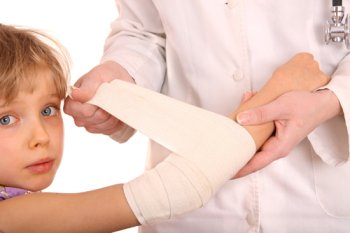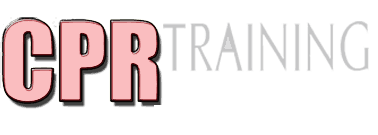Top 4 Accidents Parents Should Look Out For and How to Treat Them
It’s a given that children would get hurt and while most of these accidents won’t need a full blown first aid certification, it’s best for parents to be prepared for any eventuality. A child taking her first steps is bound to fall down or a two year old daredevil will probably tumble
several times while exploring. While parents can’t protect their children all the time, a well stocked first-aid kit, some calming words and a kiss can make that boo-boo go away. Here are the common accidents that parents should know how to treat:
• Minor Cuts or Scrapes
Kids will get their fair share of cuts and scrapes while growing up. If a 
caused by an animal, lathered it with soap before rinsing and spread a thin layer of antibiotic ointment before covering it with sterile gauze. However, 911 should be called or the child should be rushed to the ER if the cut doesn’t stop bleeding.
• Burns
Hot food and fluids are the most common causes of burn injury in children aged 6 months to 2 years. It goes without saying that parents should take extra care when feeding very young children as they’re still very gangly and awkward. But accidents do happen and the first thing
that parents should do when children suffer burns is to apply a cold and wet towel or hold the affected area under cool, running water until the pain recedes. Any blisters should be loosely covered with bandage or sterilized gauze. However, 911 should be called or the child should be
taken to the hospital if the burns are on sensitive places (face, hands, genital) or if the burn is bigger than ¼”. Parents should also look for any discharge or swelling of the skin.
• Nosebleeds
Some children get nosebleeds during winter or when they pick their nose excessively. While a nosebleed might look scary, it’s quite easy to treat and doesn’t need serious first aid training. The first thing parents should do is to have their child sit up straight but the head shouldn’t be
tilted back. Any tight clothing around the neck should be loosened or removed. The lower end of the nose should be pinched tightly and pressure applied for about 5 to 10 minutes while the child leans forward. If the nosebleed is caused by being hit, parents should hold an ice pack against the nose to reduce swelling. Call a doctor or take a trip to the ER if the bleeding hasn’t stopped after 10 minutes.
• Splinters
Young children love to explore and suddenly pick up things, increasing the risk of getting splinters. Parents should wash the area around the splinter with soap and water. Disinfect a pair of tweezers with alcohol, pull the splinter out and wash the area again. If the splinter is difficult to remove, try leaving it for a day as it might fall off on its own. A shard of glass is a little different though. If your child stepped on glass and the shards are hard to pull out, wrap the area with a clean cloth and go straight to the E.R. Get an X-ray even if it appears that all the glass out
has been pulled out. There might still be small shards that could lead to an infection.
Aside from these simple but common accidents, parents should also try to prepare for more serious incidents. Enrolling in First Aid and CPR courses would guarantee that parents are ready for any emergency situation that might hit their family.
Meta
While first aid training is important, some common childhood accidents are easy to deal with.
